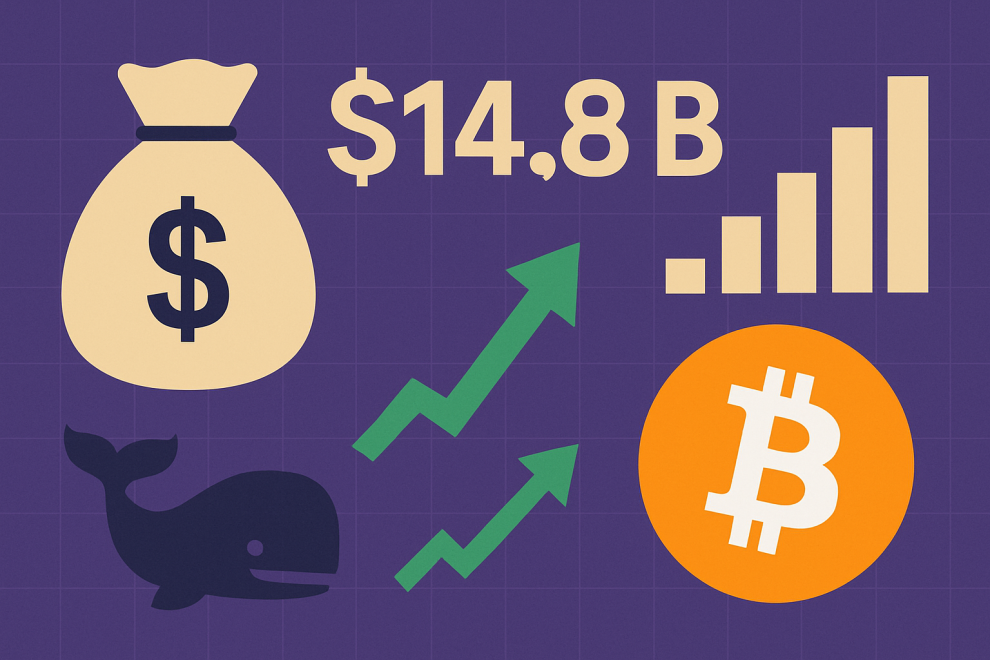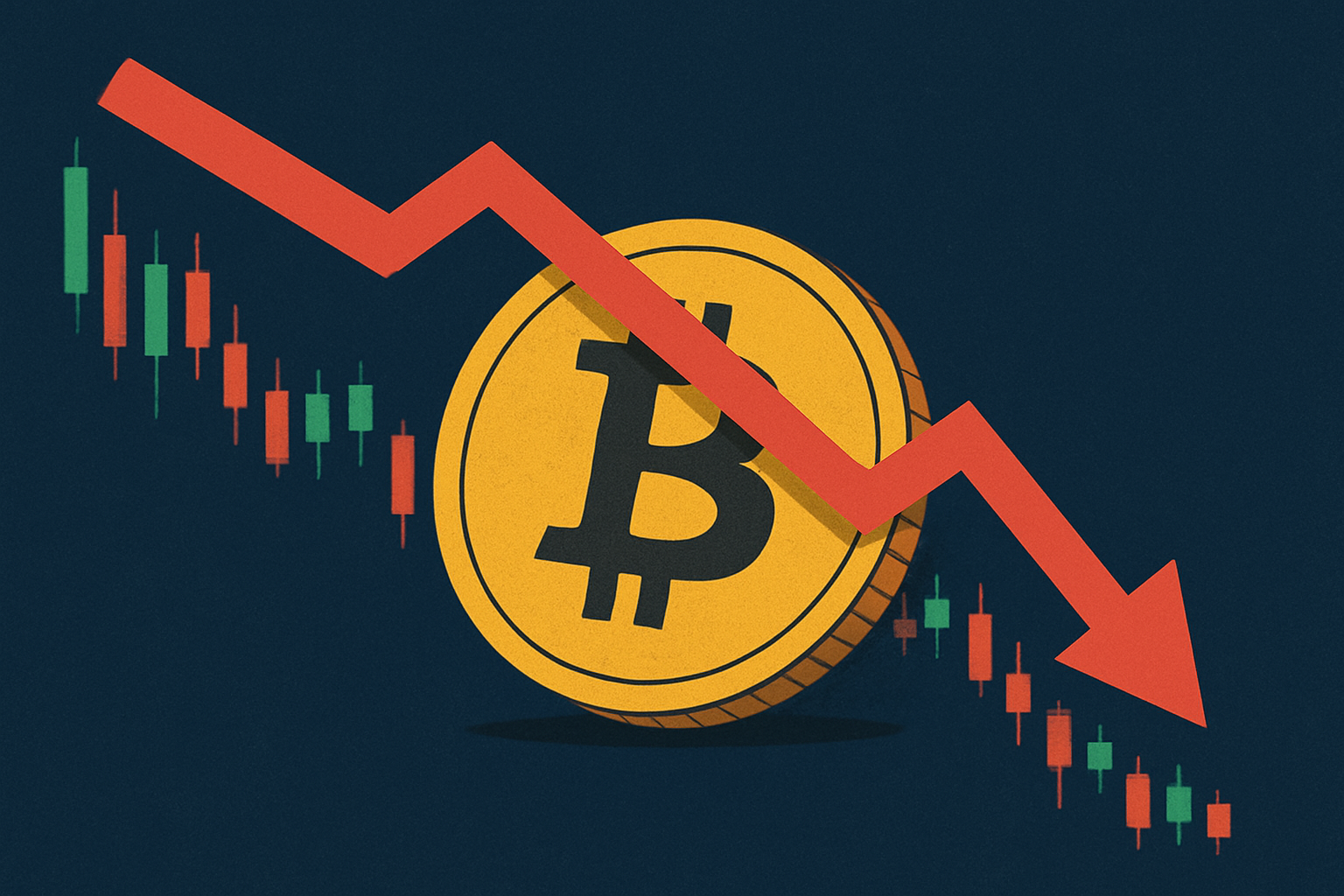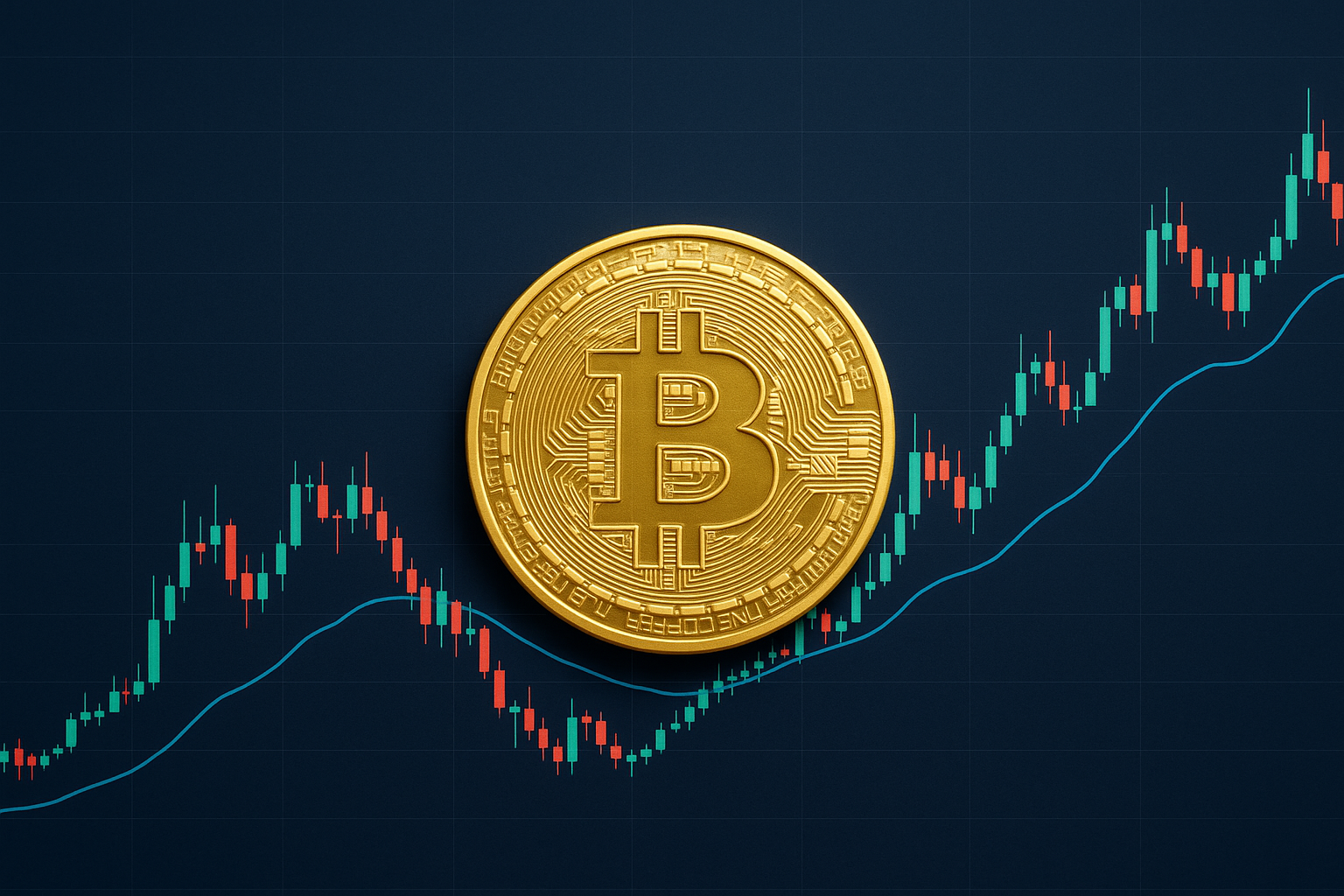Introduction
The cryptocurrency market has witnessed a transformative moment in 2025 with Bitcoin soaring to unprecedented levels. At the heart of this historic rally lies a powerful convergence of institutional appetite and large-scale whale transactions, both of which have fueled a massive surge in exchange-traded fund inflows. Bitcoin ETFs have raked in a staggering $14.8 billion in 2025 alone, marking one of the most bullish investment signals in the asset’s history. This combination of regulated financial products and deep-pocketed market players has propelled Bitcoin to new all-time highs, creating ripples across the global financial ecosystem.
The Rise Of Bitcoin ETFs And Their Growing Appeal
Exchange-traded funds centered around Bitcoin were once seen as a regulatory dream that might never materialize. However, since their approval in key jurisdictions such as the United States and parts of Europe, Bitcoin ETFs have rapidly matured into one of the most influential financial instruments in the cryptocurrency sector. These funds allow both retail and institutional investors to gain exposure to Bitcoin’s price movements without directly handling the digital asset. This has eliminated key hurdles related to custody, security, and complexity that once deterred large investors.
The $14.8 billion inflow into Bitcoin ETFs in 2025 signals a resounding vote of confidence from investors. The growth is largely attributed to increased clarity in regulation, the growing acceptance of Bitcoin as a long-term store of value, and favorable macroeconomic conditions. With inflation remaining stubbornly high in several developed markets and traditional assets delivering mixed returns, many investors have turned to Bitcoin for its potential to preserve wealth and deliver outsized gains.
Institutional Demand Reshapes Market Dynamics
While retail investors played a foundational role in Bitcoin’s rise during its early years, the 2025 rally has been dominated by institutional entities. Hedge funds, family offices, pension funds, and insurance firms have all started allocating portions of their portfolios to Bitcoin. These moves are not only significant in terms of capital but also bring increased scrutiny, risk management, and long-term strategies into the market.
Institutional investors are particularly attracted to ETFs because of the transparency, regulatory compliance, and ease of trading they provide. Unlike direct Bitcoin ownership, which may involve navigating crypto exchanges and managing private keys, ETFs simplify the process by wrapping Bitcoin exposure into familiar financial instruments. This has encouraged participation from entities previously hesitant to engage with crypto assets.
The influx of institutional capital has not only increased market liquidity but has also added a layer of price stability that was often absent during earlier bull runs. Large institutions tend to buy with long time horizons, which can absorb sell-offs and reduce volatility. As a result, the Bitcoin market in 2025 is showing signs of maturing, with deeper order books and more consistent price action even amid aggressive rallies.
Whale Activity Adds Momentum To Price Surge
Complementing the ETF-driven demand has been the decisive role of crypto whales—individuals or entities holding large quantities of Bitcoin. These whales have increasingly moved funds across wallets and exchanges in recent months, hinting at strategic accumulation and positioning. In 2025, blockchain analytics have revealed that several dormant whale addresses from the early days of Bitcoin have suddenly become active, transferring large sums of Bitcoin either to cold storage or new trading addresses.
This reawakening of long-dormant addresses has intrigued market analysts and investors alike. It suggests that long-time holders believe the market still has room for substantial growth, reinforcing bullish sentiment. In parallel, new whale wallets have also emerged, likely representing large institutions or crypto-native firms accumulating significant positions through over-the-counter trades or directly via ETFs.
The combined effect of this whale activity has been to provide sustained upward momentum in Bitcoin’s price. Every major price dip has been met with heavy buying, indicating strong support levels and a market structure that favors continued appreciation. Moreover, whale movements serve as psychological cues to retail investors, many of whom track these wallets as indicators of market trends. Their accumulation often triggers waves of buying across exchanges, adding further fuel to the rally.
Regulatory Clarity Fuels Investor Confidence
One of the most significant developments underpinning the 2025 Bitcoin rally is the regulatory progress made in key global markets. In the United States, agencies such as the Securities and Exchange Commission and the Commodity Futures Trading Commission have provided clearer guidance on the classification and treatment of Bitcoin and other digital assets. This has created a more secure environment for investment products like ETFs, which are now seeing broader approval across a range of financial institutions.
In Europe, regulators have similarly moved toward a harmonized framework for digital asset investments, with the Markets in Crypto-Assets regulation offering a common structure for market participants. This growing legal certainty has reduced compliance concerns and opened the door for banks and asset managers to launch or expand their Bitcoin-related offerings.
With greater regulatory clarity, traditional financial firms have increasingly entered the Bitcoin market, either by launching their own ETF products or by integrating crypto services into their portfolios. This has helped to mainstream Bitcoin, positioning it as a legitimate asset class comparable to gold, equities, and bonds. As regulatory concerns diminish, the investment floodgates are opening wider than ever before.
Bitcoin’s Role As A Digital Store Of Value
A central narrative supporting Bitcoin’s continued rise is its emerging role as a digital store of value. Often referred to as “digital gold,” Bitcoin shares key characteristics with the precious metal, including scarcity, durability, and resistance to censorship. However, it also offers several advantages over traditional stores of value, such as ease of transfer, divisibility, and programmability.
The narrative of Bitcoin as a hedge against inflation has gained particular traction in 2025, as traditional fiat currencies face pressure from expansive monetary policies and mounting sovereign debt. With central banks in multiple regions continuing to engage in quantitative easing or maintaining low interest rates, concerns about currency debasement have intensified. In this environment, Bitcoin’s fixed supply and decentralized nature offer a compelling alternative.
As a result, wealth preservation has become a primary driver of institutional interest in Bitcoin ETFs. Investors are increasingly viewing Bitcoin not just as a speculative asset, but as a necessary component of a diversified portfolio. This shift in perception is essential, as it lays the groundwork for sustained long-term demand, particularly from conservative investors who once viewed crypto with skepticism.
Market Structure And Liquidity Evolution
The rapid development of financial infrastructure around Bitcoin has also played a critical role in supporting its rally. In 2025, the market is witnessing a more sophisticated ecosystem of trading platforms, custody solutions, and liquidity providers. Bitcoin ETFs are central to this transformation, acting as conduits for capital while ensuring transparent pricing and efficient execution.
Market makers and liquidity providers have stepped up to accommodate the growing demand, offering tighter spreads and higher depth across various exchanges and ETF products. At the same time, innovations in settlement technology and blockchain interoperability have improved the overall efficiency of the market, reducing frictions that previously hampered institutional involvement.
The result is a more robust and resilient market structure, capable of handling large volumes of capital without major disruptions. This is a marked contrast from earlier bull runs, which were often accompanied by platform outages, liquidity crunches, and wild price swings. In 2025, the Bitcoin market appears more ready than ever to support sustained capital inflows on a global scale.
Global Adoption And Macroeconomic Tailwinds
Bitcoin’s bullish momentum is not confined to North American or European markets. Across the globe, demand for Bitcoin and Bitcoin-linked investment vehicles has surged in 2025. Countries experiencing economic instability or high inflation have seen an uptick in retail and institutional adoption of Bitcoin as a means of wealth preservation and capital flight.
In Latin America, Africa, and parts of Asia, Bitcoin ETFs and related products are finding eager audiences among investors looking for alternatives to volatile local currencies. Meanwhile, central banks in some emerging markets are exploring digital asset integration and regulation, acknowledging the rising popularity of decentralized finance.
In parallel, macroeconomic trends are adding tailwinds to Bitcoin’s ascent. Continued uncertainty in global supply chains, geopolitical tensions, and concerns about fiscal sustainability in developed nations have all contributed to a growing appetite for decentralized and non-sovereign assets. Bitcoin, with its reputation as a crisis-resistant asset, stands out in this landscape as a safe harbor for capital seeking security and long-term appreciation.
Conclusion
The historic inflow of $14.8 billion into Bitcoin ETFs in 2025 marks a pivotal moment in the evolution of cryptocurrency. No longer viewed solely as a speculative asset or a fringe financial experiment, Bitcoin is now firmly embedded within the global investment ecosystem. The surge in ETF participation reflects a broadening investor base, one that spans from retail traders to the most established institutional powerhouses. This legitimization has propelled Bitcoin to unprecedented price heights, fueled by a combination of macroeconomic instability, regulatory clarity, and the deepening maturity of the market infrastructure.













